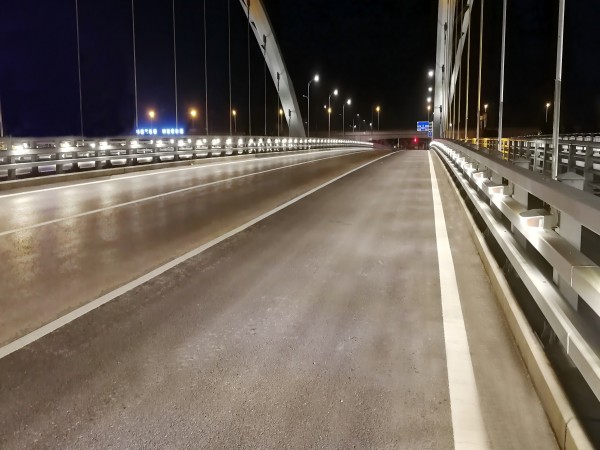Sansi LED: Sustainable LED Lighting and Integrated LED Display
Delivering premium and professional LED Display, LED Lighting, Smart City Integration solutions, trusted by over 60,000 companies worldwide everyday. From industrial lighting to commercial lighting, from outdoor advertising to XR & VR production, Sansi LED greatly improves the quality and sustainability of your business with 30 years of expert experiences.
In modern cities, road safety management is a critical concern, and innovative technologies like LED guardrail lights are increasingly playing a transformative role. These lights, integrated into road barriers or guardrails, combine functionality with aesthetics, offering solutions that enhance visibility, reduce accidents, and contribute to energy-efficient urban landscapes. Below, we explore how LED guardrail lights are reshaping urban road safety.

Enhancing Visibility and Guidance
LED guardrail lights are designed to provide continuous illumination along roads, bridges, and overpasses. Their linear installation creates a clear visual boundary, guiding drivers—especially in low-light conditions or complex traffic environments like sharp curves or intersections. For instance, in Shanghai’s Yan’an Elevated Road, replacing traditional fluorescent lamps with LED guardrail lights increased average illuminance from 18 lux to 24 lux, significantly improving lane visibility and uniformity. This "light path" effect helps drivers perceive road edges and lane divisions more intuitively, reducing the risk of collisions with barriers or off-road accidents.
Moreover, LED guardrail lights can emit dynamic color changes (e.g., red, blue, or flashing patterns) controlled by microchips. This feature is particularly useful for signaling hazardous zones, construction areas, or emergency lanes, offering real-time alerts to drivers.
Mitigating Glare and Light Pollution
Traditional streetlights mounted on poles often cause glare, which can blind drivers and pedestrians. In contrast, LED guardrail lights are installed closer to the ground (0.8–1.2 meters high), allowing for wide-beam distribution while minimizing upward light spill. Advanced designs incorporate cut-off optics to direct light precisely onto the road surface, reducing discomfort glare and light pollution. Studies using virtual reality simulations have shown that proper installation height and spacing optimize illumination uniformity without compromising safety.
Energy Efficiency and Durability
LED guardrail lights outperform conventional lighting in energy savings. For example, the Shanghai case demonstrated a 40% reduction in energy consumption compared to fluorescent systems, thanks to their low power demand (e.g., 10–12W per meter). Their solid-state design ensures longevity (up to 80,000–100,000 hours), reducing maintenance costs and frequency. Additionally, their rugged construction—featuring waterproof, dustproof, and impact-resistant materials (IP65-rated)—makes them suitable for harsh environments like coastal areas or heavy traffic zones.
Aesthetic Integration and Urban Identity
Beyond safety, LED guardrail lights contribute to urban beautification. By outlining bridges, riverbanks, or iconic buildings with dynamic color transitions, they create visually striking nightscapes. For example, cities like Shanghai and Guangzhou use these lights to highlight architectural contours, blending functionality with artistic expression. This dual purpose not only enhances a city’s nighttime appeal but also fosters a sense of identity and pride among residents.
Challenges and Future Directions
While LED guardrail lights offer numerous benefits, challenges remain. For instance, improper installation angles or excessive brightness can still cause glare, necessitating precise engineering. Future advancements may integrate IoT sensors for adaptive brightness control or integrate solar power for off-grid applications.
LED guardrail lights represent a fusion of safety, sustainability, and smart design. By improving visibility, reducing energy consumption, and enhancing urban aesthetics, they are becoming indispensable in modern road safety management. As cities continue to prioritize sustainable development, these innovative lighting solutions will likely play an even greater role in shaping safer, smarter, and more livable urban environments.
-
NO DATA
